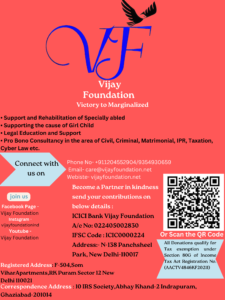PROUD MOMENT SUPREME COURT CELEBRATES DIAMOND JUBILEE
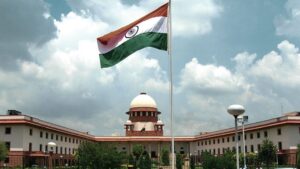
The Supreme Court of India is all set to celebrate the Diamond Jubilee celebrations. An Apex body which is the custodian of our Constitution upholds and uplifts the rule of law thereby ensuring and protecting citizens’ rights and liberties. It is also credited to be a final court of appeal.
SUPREME COURT IN PRE INDEPEDENCE INDIA
Section 13 of the Regulating Act 1773 made a detailed provision for the establishment of a Supreme Court of judicature at Fort William, in Calcutta. This Supreme Court consisted of a chief justice and three other judges of higher rank but inferior to the chief justice. The British King appointed the judges. A barrister working for five years was qualified for the appointment as a Supreme Court judge. The judges held office under the orders of the crown and could also be removed by the crown. In 1774, Sir William Jones was one of the first judges of the Supreme Court of Judicature of Bengal.
Sir Elijah Impey was the first Chief Justice of the Supreme Court of Calcutta. The judges at the Supreme Court of India had the same powers and authority as the judges that sat in the court of the King’s Bench in England. They followed common laws and rules in both places
SUPREME COURT IN POST INDEPEDENCE INDIA
January 26, 1950 The Supreme Court of India was established. The Chamber of Princes, which was present in the Parliament House, was the first residence of the Supreme Court, later, it moved into the current building in 1958. On 29 October 1954, Dr. Rajendra Prasad, the first President of India, laid the foundation stone of the Supreme Court building.
When India achieved its independence, the Abolition of Privy Council Jurisdiction Act was passed in 1949 which abolished the jurisdiction of the Privy Council (formerly England’s highest court of appeal), to entertain new appeals and even the authority to dispose of the pending appeals. The pending appeals were then transferred to the Federal Court of India.
The Court has an original, appellate jurisdiction for the matters adjudicated by High Courts along with other Tribunals, revisional and advisory jurisdiction.
LANDMARK JUDGEMENTS BY SUPREME COURT OF INDIA
Kesavananda Bharati case (1973) : –
This judgement defined the basic structure of the Constitution. The SC held that although no part of the Constitution, including Fundamental
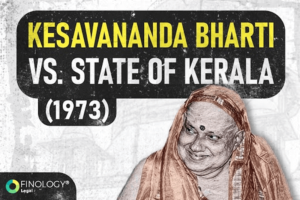
Rights, was beyond the Parliament’s amending power, the “basic structure of the Constitution could not be abrogated even by a constitutional amendment.” This is the basis in Indian law in which the judiciary can strike down any amendment passed by Parliament that is in conflict with the basic structure of the Constitution.
Maneka Gandhi case (1978): –
A main issue in this case was whether the right to go abroad is a part of the Right to Personal Liberty under Article 21. The SC held that it is included in the Right to Personal Liberty. The SC also ruled that the mere existence of an enabling law was not enough to restrain personal liberty. Such a law must also be “just, fair and reasonable.”

Vishaka and State of Rajasthan (1997):-
This case dealt with sexual harassment at the workplace. In the judgement, the SC gave a set of guidelines for employers – as well as other responsible persons or institutions – to immediately ensure the prevention of sexual harassment. These are called ‘Vishaka Guidelines’. These were to be considered law until appropriate legislation was enacted.
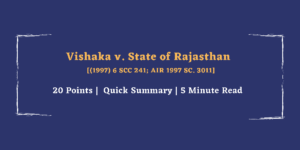
MC Mehta and Union Of India (1986)
This case dealt with 3 issues: Scope of Article 32; rule of Absolute Liability or Rylands vs Fletcher to be followed; issue of compensation. SC held that its power under Article 32 is not restricted to preventive measures, but also remedial measures when rights are violated. It also held that in the case of industries engaged in hazardous or inherently dangerous activities, Absolute Liability was to be followed. Finally, it also said that the amount of compensation must be correlated to the magnitude and capacity of the industry so that it will be a deterrent.
LUNINARIES OF SUPREME COURT
Justice Yeshwant Vishnu Chandrachud
 served as the 16th Chief Justice of the Supreme Court from 1978 to 1985. He is the longest-serving Chief Justice in India’s history, at seven years and four months. During his tenure as Chief Justice of India, he oversaw many landmark cases, one of which was the Kissa Kursi Ka case, where Sanjay Gandhi was remanded to 30 days in judicial custody by the Supreme Court. It was this ruling that undid the perception that the judiciary had capitulated to political influence.
served as the 16th Chief Justice of the Supreme Court from 1978 to 1985. He is the longest-serving Chief Justice in India’s history, at seven years and four months. During his tenure as Chief Justice of India, he oversaw many landmark cases, one of which was the Kissa Kursi Ka case, where Sanjay Gandhi was remanded to 30 days in judicial custody by the Supreme Court. It was this ruling that undid the perception that the judiciary had capitulated to political influence.
During his time as a Supreme Court judge, Justice Chandrachud authored a total of 338 judgments. He authored the most judgments in 1977 (48).
In K.S. Puttaswamy v UOI (2017), his landmark case A.D.M. Jalbalpur v Shivakant Shukla (1976) was overruled by Justice D.Y. Chandrachud. A nine-judge Constitution Bench headed by Justice D.Y. Chandrachud said that privacy is a fundamental right, overruling the 1976 verdict and terming it as “seriously flawed.
Justice Prafulla Chandra Natwarlal Bhagwati
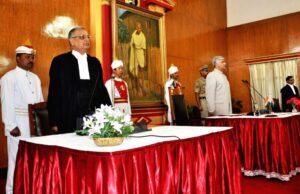
was the 17th Chief Justice of India, As a supreme court judge, Justice Bhagwati introduced the concepts of Public Interest Litigation and absolute litigation to the Indian judicial system. He is therefore held, along with Justice V.R Krishna Iyer to have pioneered judicial activism in the country. Chief Justice Bhagwati had an expansive view of the judicial role, saying in an interview that “I practically rewrote Part III and Part IV of the Constitution. I moulded the law. I still remember those days. It was a thrilling experience. In 2007 Bhagwati was awarded the Padma Vibhushan in public affairs, India’s second highest civilian award.
Let us salute to the Supreme Court for upholding Fundamental Rights Under Article 32 of the Constitution where one can directly seek a remedy through writs if they feel their fundamental rights are violated.
The Supreme Court has the power of judicial review on the matters mentioned in Article 13 , which means it has the power to strike down any law formed by the executive or legislative wing if it finds that the law disobeys the Constitution of India.
Advocate Mamta Shukla
Founder Vijay Foundation
